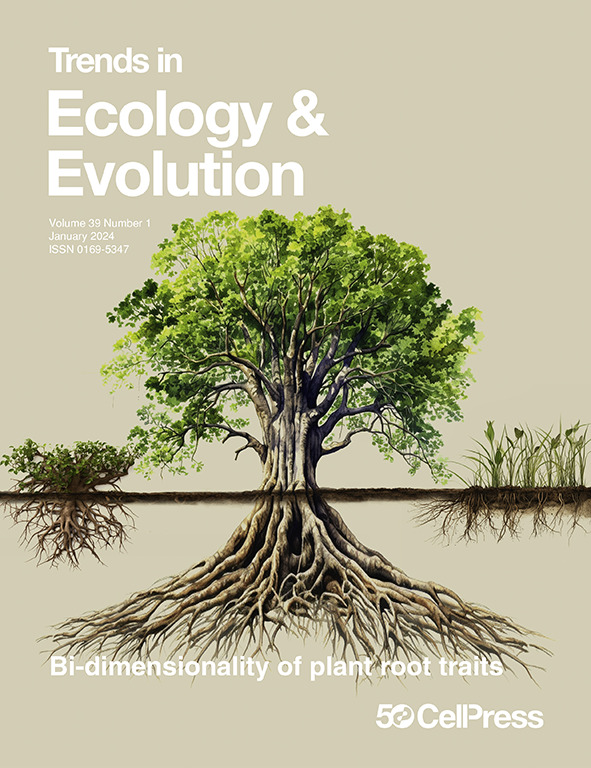草木:可持续发展中被忽视的杂交品种。
IF 17.3
1区 生物学
Q1 ECOLOGY
引用次数: 0
摘要
草木——适应森林的大型单子树,如竹子、棕榈和香蕉——结合了草一样的快速生长和树一样的树冠优势。它们在木本植物和草本植物之间的模糊地位导致了研究的忽视。认识到它们是一种独特的增长形式,是发挥它们作为基于自然的可持续解决方案的潜力的关键。本文章由计算机程序翻译,如有差异,请以英文原文为准。
Grassy trees: the neglected hybrids for sustainability.
Grassy trees - large forest-adapted monocots such as bamboo, palm, and bananas - combine grass-like rapid growth with tree-like canopy dominance. Their ambiguous status between woody and herbaceous plants has led to research neglect. Recognizing them as a distinct growth form is key to harnessing their potential as nature-based solutions for sustainability.
求助全文
通过发布文献求助,成功后即可免费获取论文全文。
去求助
来源期刊

Trends in ecology & evolution
生物-进化生物学
CiteScore
26.50
自引率
3.00%
发文量
178
审稿时长
6-12 weeks
期刊介绍:
Trends in Ecology & Evolution (TREE) is a comprehensive journal featuring polished, concise, and readable reviews, opinions, and letters in all areas of ecology and evolutionary science. Catering to researchers, lecturers, teachers, field workers, and students, it serves as a valuable source of information. The journal keeps scientists informed about new developments and ideas across the spectrum of ecology and evolutionary biology, spanning from pure to applied and molecular to global perspectives. In the face of global environmental change, Trends in Ecology & Evolution plays a crucial role in covering all significant issues concerning organisms and their environments, making it a major forum for life scientists.
 求助内容:
求助内容: 应助结果提醒方式:
应助结果提醒方式:


